Many professional bakers will insist you need to measure flour and other dry ingredients by weight (ounces or grams) vs by volume (cups or mls) to get the best results. Measuring flour by weight is far more accurate and will ensure consistency in your final products. However...

Coconut Banana Bread Vegan Blueberry Muffins Best Banana Muffins Breakfast Cookies Ginger Cookies
How to measure flour
In my opinion, this is really only necessary when you are making fancy cakes or pastries. Think your Great Aunt's special Christmas cookies or that delicate layer cake you get at a bakery. This is when perfection matters.
Most home-baked goods are not that fussy. Cookies, quick breads, muffins, granola bars, just don't need to be perfect.
Imperfection keeps things interesting.
I know, I know, there is probably an army of bakers fainting at that comment - but here me out. I don't mean to offend. And I am certainly not recommending you just throw flour into a bowl, all willy-nilly.
All I am saying is, you shouldn't get all stressed out about grams of flours when you want to bake a batch of muffins.
I tend to pack a little extra something into each batch anyway -- whether is a bit more banana, nuts, chocolate or flaxseed. A less precise method to measure flours is acceptable.
Encouraged really.
The last thing I want to see is someone looking at a recipe for a simple muffin or date square and feeling so intimidated that they decide not to make it at all.
However, there are some important things to know about measuring dry ingredients before you get started.
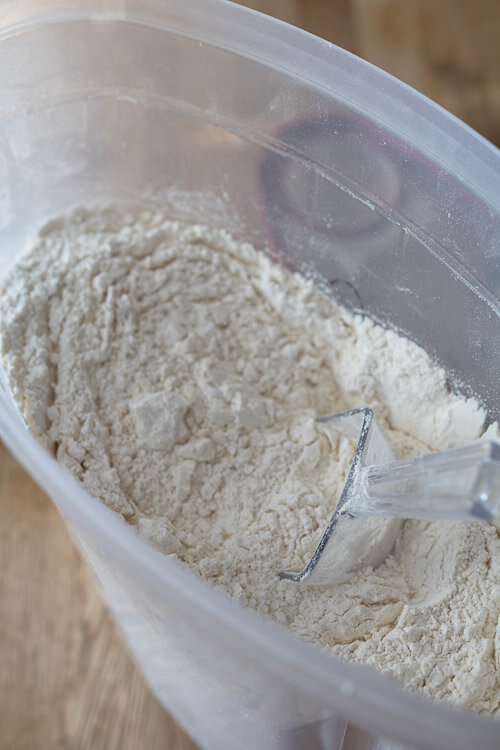
Important steps for measuring flour
- Always measure dry ingredients using dry measuring cups and spoons. Do not try to use a liquid measuring cup to measure dry ingredients.
- The reason for this is you want to avoid packing down dry ingredients, especially flour (brown sugar is an exception, but still needs to be measured in a dry measure cup, however, it needs to be packed slightly).
- Flour will compact and compress when asked to, unlike white sugar for example. Compressing the flour means you get more flour into the cup, which is a bad thing. It will make your baked goods dry and crumbly.
- I keep my flours in large Rubbermaid storage bins. A 2.5 kg bag fits nicely in this 22-cup sized bin, and they are large enough that I can get my measuring cups in there without making a mess. I've always found keeping flour in the paper bag it comes in more messy. It's hard for me to get my hands in there.. see next note.
- Always fluff your flour before you measure. I keep a small plastic scoop in each bin and just dig a few times to add air to the flour that has settled.
- To measure - two methods I use:
- Scoop directly in the fluffed bin of flour with the measuring spoon and level off
- Use a smaller scoop to gently fill measuring spoon and level off
- After measuring the flour, do not tamp it down, do not knock it on the table, do not press it with your hand. Simply level it with something flat and long enough to cover the top of the entire measuring cup. A butter knife, the handle of a spoon, or the flat underside of your flour scoop. Tools don't need to be fancy or single purpose. You need something straight that you can run along the top of the measuring cup in one sweep.
- Properly leveled, flour will fill the measuring cup to the top, straight across.
flour scooped directly from the flour bin Scrap with a flat edge to level Properly measured flour
Things to know about different types of flours:
I treat all flours the same way, fluff, scoop, level. Including gluten-free mixes, almond flour, brown rice flour, spelt, chickpea, etc.
Pastry flour is the only exception.
I rarely use pastry flour. It's lighter, has less gluten and is good when you want a delicate, fine-textured cake or cookie. Mostly, it is just not necessary. And rarely will you see it my recipes. But I wanted to mention this in case you felt you could use it in place of all-purpose flour - you cannot. Only use pastry flour if it has been specifically called for in a recipe.
Due to its fine texture, I find pastry flour needs to be measured by weight and sifted before using. You can weigh it first (they nice thing about measuring by weight is it does not matter how packed, or not packed the flour is, it still weighs the same) then run it through a sieve before adding to your mixing bowl. Pastry flour should be sifted before using otherwise your baked goods will be dense.



Equivalents volume to weight measures for common types of flour
| All purpose flour, 1 cup | 120 grams |
| Whole Wheat all-purpose flour / White Whole Wheat / Whole grain blends - 1 cup | 113 grams |
| White bread flour - 1 cup | 120 grams |
| White pastry flour - 1 cup | 106 grams |
Pumpkin Spice Cake Lemon Poppy Seed Cake Guinness Cake
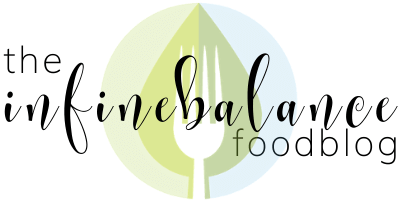



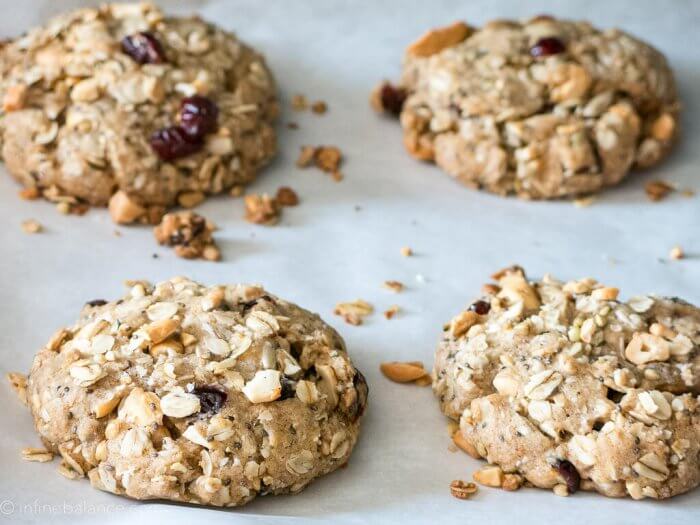
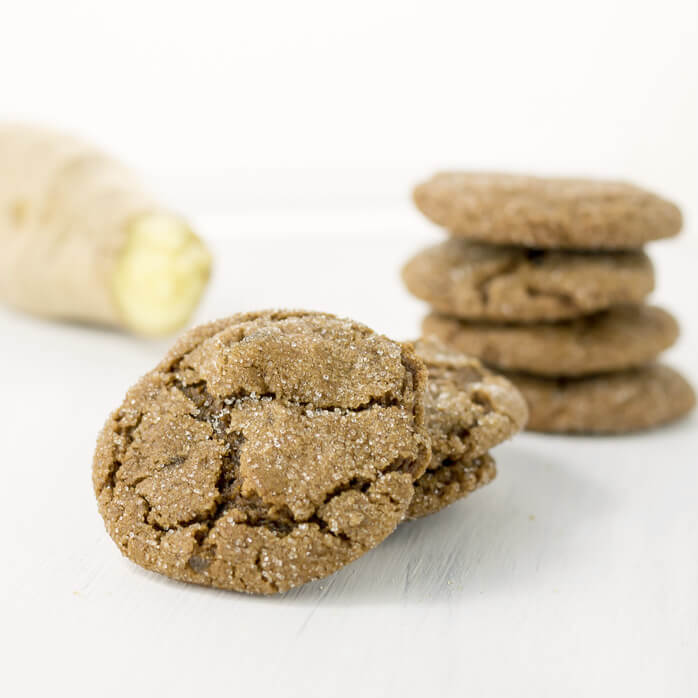
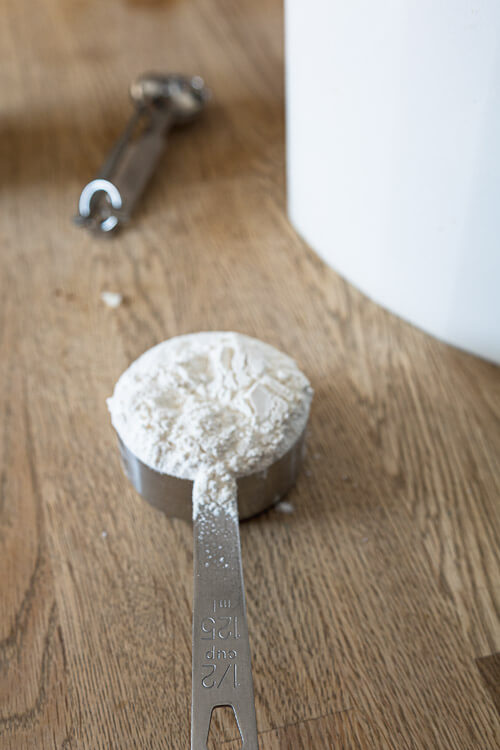
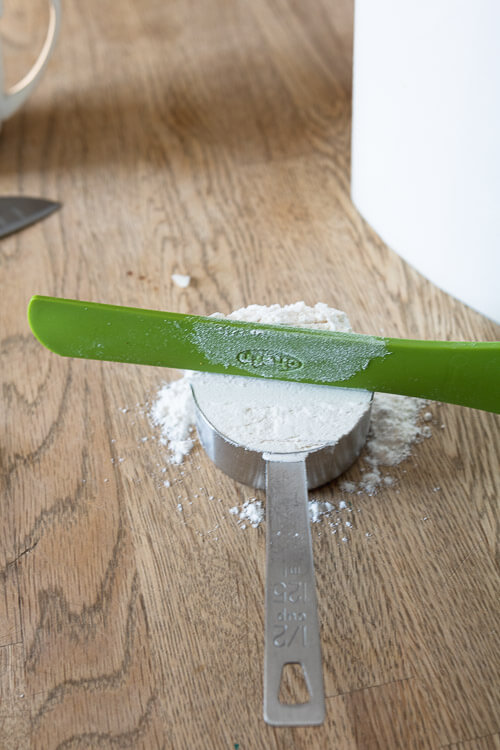
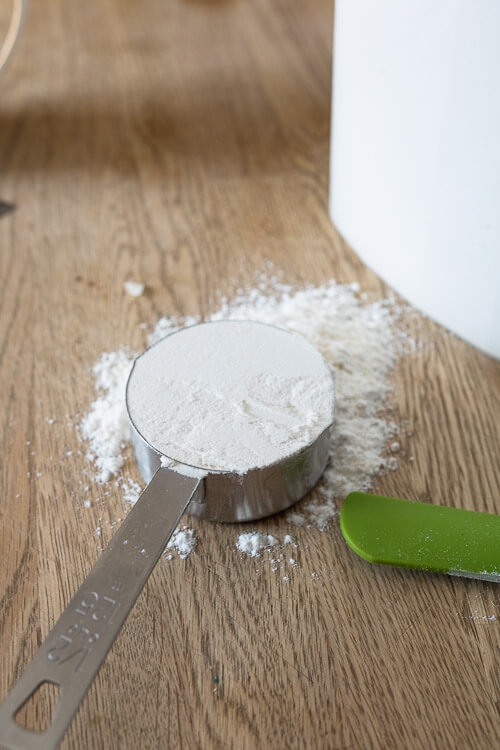
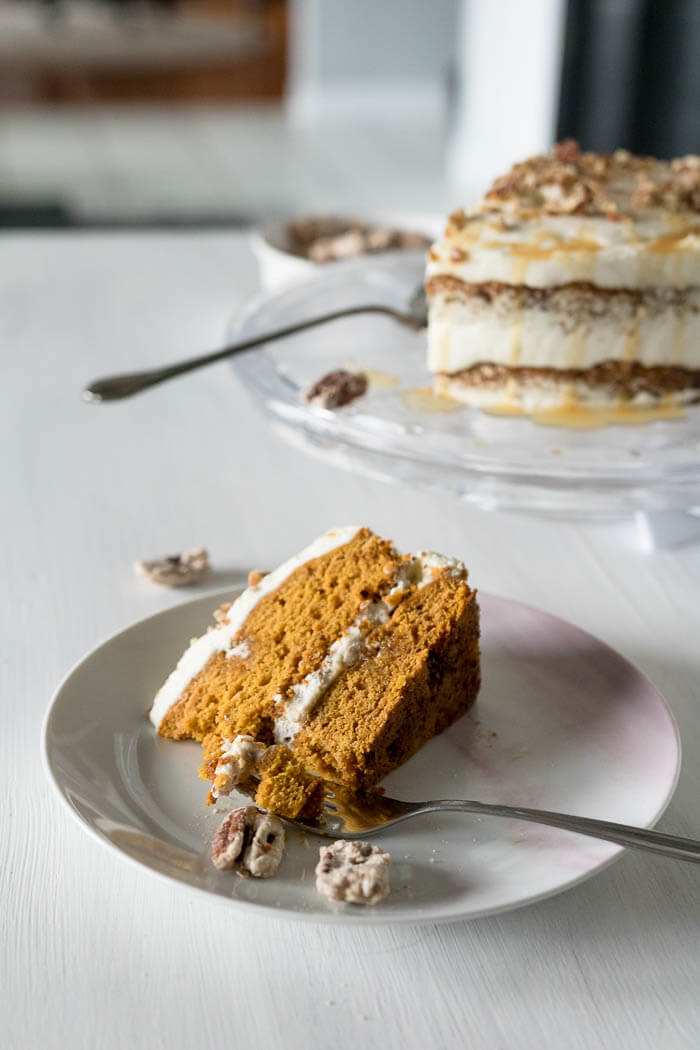
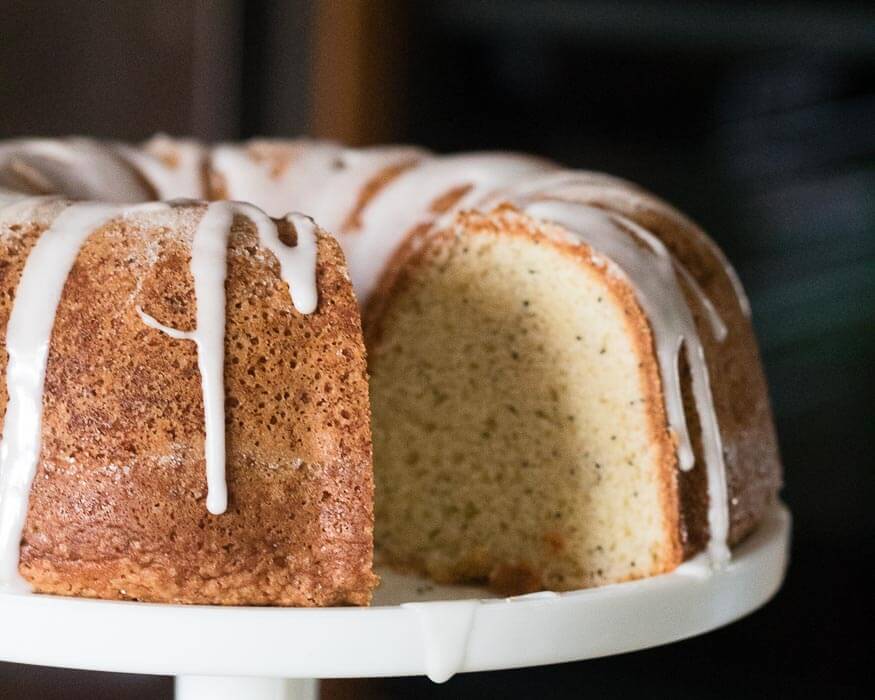
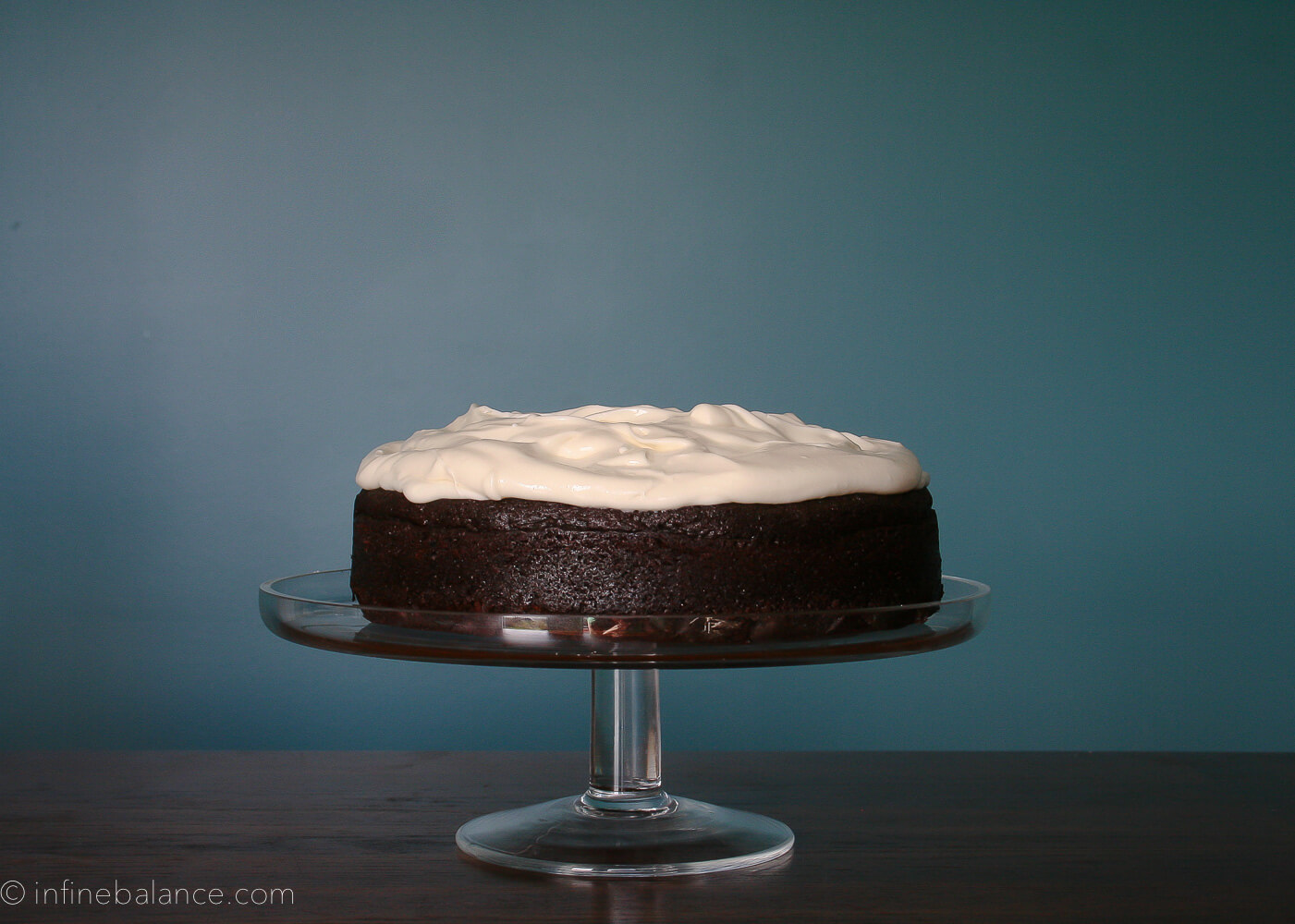
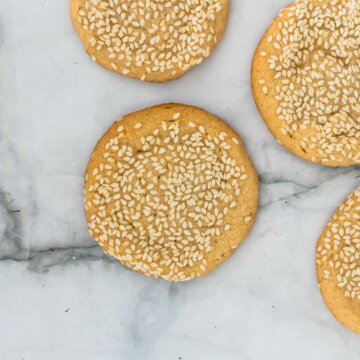
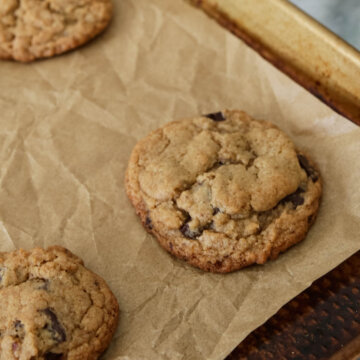
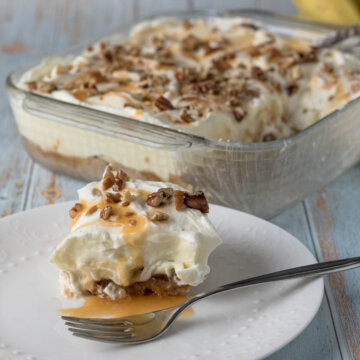
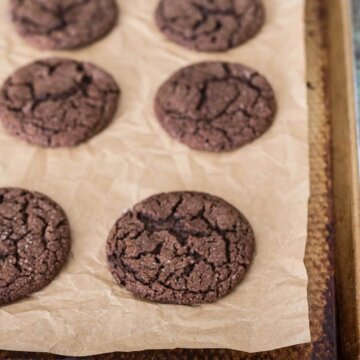
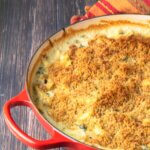

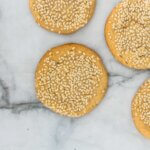
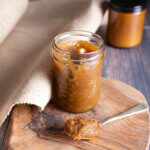
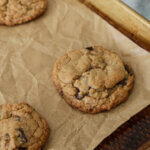
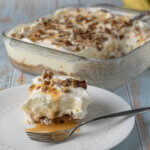
Comments
No Comments